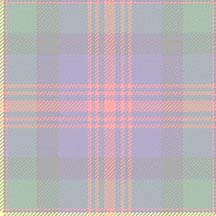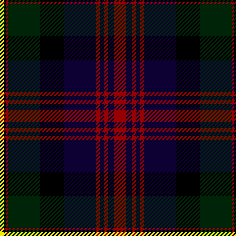|
|
|
Clan MacLennan
Information


Tartan:
MacLennan & Logan (modern), Ancient, Weathered

Badge: A demi-piper all Proper, garbed
in the proper tartan of the Clan MacLennanArms: Heart Gules between two passion nails conjoined in base Sable, on a chief Azure a stag's head cabossed between two antique crowns, all of the First.Motto: Dum spiro spero (Latin: While I breathe, I hope)
Associated Names & Septs: Gilfiman, Gillfiman, Gilfillian, Gilliland, Lagan, Laggan, Lenan, Lennan, Lennon, Leonard, Leonerd, Loban, Lobban, Logan, Loggan, Lyndon, MacAlenon, MacAlinion, MacAlinden, MacAlonan, MacClanachan, MacClanchan, MacClaron, MacClennen, MacClendon, MacGilillan, MacKilligan, MacLarnon, MacLenagan, MacLenahan, MacLenadhan, MacLenden, MacLendon, MacLennon, MacLernon, MacLoran,MacLorinan, MacLyndon, MacWilname, McClenaghan, McClendal, McClendas, McClendon, McLandon, McLendall, McLendon, McLennon, MackLenddon, MackClenden, MackLendin, MackLendon, MacLendall,Meclendon, Mclendon, Winan, Winning, and Winton .The MacLennans are of ancient Celtic origin from Ireland, and in the mist of antiquity we find Lide MacLennan and his Clan of twelve hundred men in Ossianic poetry. The MacGillafinnens, or MacLennans, were titled Lords of Loch Erne, Tairg, and Muintir Peodachain. In Scotland they were appanaged land in Lorne, Mull, Tiree, and Iona. St. Adamans recorded they were occupying Glenshiel at an early date and were in residence at Eilean Donnan Castle before 1263. They spread to Strathearn in Perthshire, Kirkcudbright, Dumbarton and Galloway. In Kintail, they lived with their kin, the MacRuairis,who were granted ten davochs of Kintail by David II in 1342. After raiding Tain and Chanonry in 1372 the Clan was defeated by the Frasers and MacRaes of Aird at Drumderfit, Black Isle. The sept name Lobban originated from this battle. A further reverse at LagabraadConon in 1481 of Chief Duncan and his Clan terminated the MacDonald association. The name Logan is from the Gaelic word Laggan, meaning low lying ground, and this sept provided the Knights Sir Robertand Sir Walter Logan who escorted King Robert the Bruce's heart to the Holy Land. Both died with SirJames Douglas fighting the Moors in Spain in 1329.
At an early date they held lands in Strathearn, Galloway, Ulster and later were Barons occupying Restalrig and Fast Castles. Geoffrey, son of Knight Logan c1150 took the name of his estate GASK from whom those of the name Gass descend. Duncan MacLennan of Strathearn, who is mentioned in the charter of Alexander II in 1217, became Laird of Bombie. This spelling over a period of time became MacLellan and there were no fewer than 14 Knights in Galloway at the beginning of the 15th Century.
The religious strife in Scotland and Ireland brought the Clan together. Chief Ruairidh Ban, Son of John MacGillafinnen, was in Holland around 1630 in connection with the flight of the Earls from Ireland. At the Battle of Auldearn in 1645, the Clan (Scottish, Irish and Logans) failed to receive the order to retreat; were isolated and cut down by the Duke Gordon's Cavalry; eighteen Captains of the Clan were killed; and brothers of the Chief (Donald and Duncan MacIan) died defending the Standard. In recognition of the outstanding bravery of gigantic red-haired Chief Rory Ban, he was offered an honourable surrender;however, he declined and was shot. As Bothwell observed, the MacRaes married the widows and became a considerable Clan. A hundred years later at the Battle of Culloden, only twelve of the Clan took part, including Roderick (grandson of Chief Rory), so the great losses at Auldearn were still obvious.
Emigration to seek betterment in places throughout the world saw further disbandment of the Clan. However, the embers of pride in our heritage still glow as Chief Ruairidh Donald George MacLennan ofMacLennan, the 35th Hereditary Chief of Clan MacLennan, enthusiastically leads the Clan, and along with his sisters Kirsteen and Lorna, ensures the continuation and grace of our evergreen line.
ORIGINS OF OUR NAME
The following are the three most probable sources from which our surname may have evolved. Therewould seem to be a strong argument for the first two, since many Highland Clans acquired ecclesiasticalpatronymics in honor of Celtic saints.
Siol Adamnan (Race of Adamnan) probably in honor of St. Adamnan.
Siol Finan (Race of Finian) probably in honor of St Finian.
Siol Liannan (Race of the Sweetheart) possibly referring to an illegitimate offspring.A Brief History of the Clan Maclennan
by Malcolm Lobban, Clan Association PresidentClann Ghill'innein
( The MacLennans)
Like many other Scottish clans, various traditions and folk-lore surround and sometimes cloud reality of the Maclennans origins. Current research tends to show that the surname, being an anglicised form of a Gaelic patronymic, may have evolved in various parts of Ireland and Scotland, and at different times, giving rise to individual families.The "Gill" part of the name refers to "Servant", and the two most likely sources from which the name is derived have ecclesiastical connotations: Servant of"( St.) Finnan". It was a practice among early Highlanders to name children in honour of revered Celtic saints ( not necessarily being progenitor of a clan ) and many such personal names became surnames.
The earliest appearance of the name in Scotland would seem to be 1217, when we find one " Kessey MacLenin" signed a charter of the Earl of Lennox. He again appears in 1250 as " Kessimus Macclenane" ( Cartularium Comitatus De Levenaux, p.401).
The name is also common in Ireland, although there is no real evidence to show direct connection with Scottish clans of the name. A prominent Irish family, the " MacGilla-Finnans", became Lords of Loch Erne in Co. Fermanagh. Irish records show that other sources, mainly arising out of patronymics as in Scotland, resulted in different families with variations of the name, including te 'O'Glennans of Co. Mayo; MacLeneghans of Co. Tyrone and several others holding lands in different areas, from Ulster in the north to Cork in the south.
In Scotland, again the name appears to be widespread, with the greatest concentration being found in the north, especially Ross-shire and Inverness-shire. In earlier times, the Isle of Mull may have been a cradle of the clan, suggesting affinity with the ancient House of Loarn of Scottish Dalriada.
In later times, MacLennans appeared prominent in Wester Ross and in particular the old parishes of Kintail and Glenshiel. Other septs were settled in the districts of Lochcarron, Lochbroom and inland Strathconon. In Inverness-shire, we find groups settled in Glenelg, Glengarry and Morar. In the time of the earls of Seaforth, some MacLennans were removed from the mainland and settled in Lewis and other properties of the powerful MacKenzie chiefs.
An old tradition, still fostered by many historians, suggests that the MacLennans and Logans are of the same stock. There is no real proof of such kinship ( in spite of such a connection shown in the armorial bearings of the current MacLennan of MacLennan). The legend seems to have grown out of the obscure references to a battle ( of uncertain date, circa 14th century) fought between the Frasers of Lovat and a clan named Loban (Later becoming Logan), at a place called Drumderfit on the Black Isle, Ross-shire. it is told that a descendant of the defeated Loban chief ( Gilligorm) became progenitor of the MacLennans ( MacGill-Fhinnan) in Wester Ross.
Other unconfirmed tales suggest that the first of the name Loban, being a MacLennan, received his nickname having hidden himself beneath a " carn-loban" ( peat creel or cart) to avoid slaughter during the afore mentioned battle.
It is true, however, that a family named Loban were for centuries tenants on the Drumderfit lands, and that a wooden effigy of their alleged chief, Gilligorm, was kept and revered in Drumderfit House until 1715, when it was destroyed by government soldiers.
Much of the Clan's history is overshadowed by it's dependency on the powerful Lords of the Isles (MacDonalds) and later adherence to the Earls of Seaforth, whose standard they are said to have carried in battle.
Similarly the lineage of MacLennan chiefs is not clear, the last on record being " John MacLennan of that Ilk" who signed a petition in support of George I in 1714. ( Scot.Records Office, ref.GD103, Parchment A053) of the clan - used in times when the title falls " de facto" and " de jure" vacant. The chiefship has been passed on to his son, the present Chief Ruairidh Donald George MacLennan of MacLennan, a student in Aberdeen University, who lives at Dores, Inverness-shire.
The Clan is further represented by Chieftain Gregory Scott MacLennan , New South Wales, Australia.